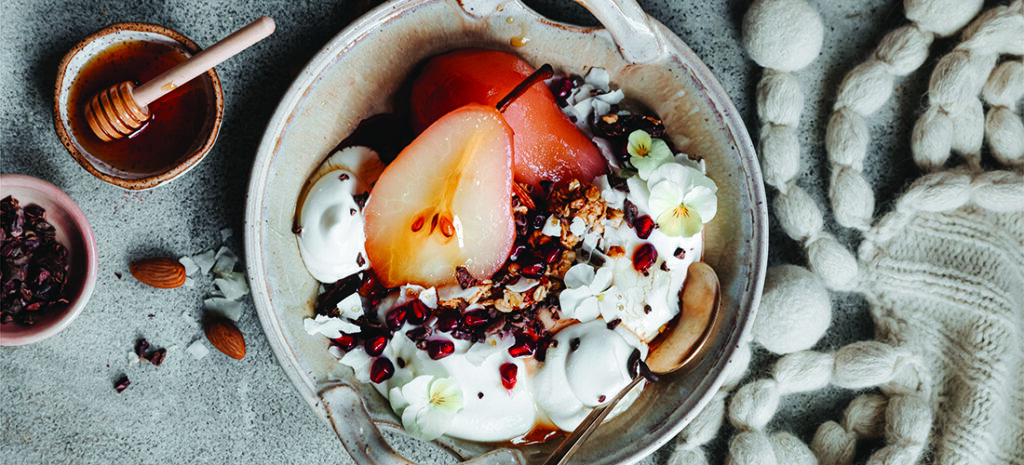Focus on Food

Celebrating the Pear
Delicate, temperamental and extraordinary
Story and Photograph by Rose Shewey
Pears are a recurring, bittersweet theme in my family. My mom grew up in the Yugoslavia of the 1940s as the youngest of five siblings. When her eldest brother secretly packed his bags one night to attempt to cross the border into Italy, my mom, then 7 years of age, sensed that big changes were ahead. Too young to comprehend the gravity of the situation, her brother simply told her that he was about to visit their aunt and would bring back a basket full of pears from her tree — my mom’s favorite fruit. It wasn’t until weeks after he had left that my mom understood that she’d never see the pears she was promised, nor would she see her brother again, who had been granted a visa to immigrate to the United States.
The pear saga continues. The first solid food I ate as a baby — I have photo proof — was a pear and, in middle school, the first poem I learned to recite by heart, wholeheartedly, was a ballad written by Theodor Fontane, Herr von Ribbeck auf Ribbeck im Havelland. It tells the story of an old man, a gentle soul, who graciously hands out pears from his stately tree to the children of the village. Knowing that he would die soon and that his son was utterly ungenerous, he asks to be buried with a pear. In time, a pear tree grows on his grave, and the children of the village joyfully pick pears every fall — the old man’s legacy.
Aside from the sentimental appreciation I have for pears, I always considered them to be in a class of their own. Pears, as opposed to their close relatives, apples — the workhorse of the rosaceous crop — are much more delicate in nature. More temperamental, too, but also capable of creating moments worth celebrating when eaten at just the right time. Pears can do extraordinary things, too. Slide a bottle over a young pear on a tree, as they do in the French Alsace region, and allow it to grow directly inside the bottle. You’ll end up with eau de vie de poire (“pear water of life”) after the pear reaches full maturity and is turned into delicious brandy.
A simple but snazzy way to enjoy pears is to poach them. Ah, the possibilities are endless. From using wine or cider or any type of fruit juice and spices you choose, poaching pears is most satisfying and requires no special skill. My latest discovery in enjoying poached pears? Marry them with whipped cottage cheese. As lumpy and, to some, unappealing as cottage cheese appears in its natural state, once whipped, it turns into a silky, marshmallow-y cream firm enough to make picture-perfect dollops when plated. PS
Pomegranate Poached Pears with Whipped Cottage Cheese
(Serves 2)
16 ounces cottage cheese (4 percent milk fat)
1 quart pomegranate juice
1 cup sugar
Juice of 1/2 lemon
1 cinnamon stick
2-3 whole cloves
1-2 star anise
1 vanilla bean, cut lengthwise (optional)
2 large pears (Bosc, Bartlett or Anjou)
Toppings of your choice
Place cottage cheese in a food processor and blend until you have a smooth, silky texture that resembles soft whipped cream. Store in the refrigerator.
In a medium pot, heat pomegranate juice. Add sugar and stir to dissolve. Add lemon juice and remaining spices. Peel pears (halve and core, if desired), slide into the liquid and simmer until done — pierce pears with a paring knife, if it meets no resistance, the pears are done. This may take between 10 and 25 minutes, depending on the pears.
Be sure to keep pears submerged or turn them over every once in a while so they cook evenly.
Serve with whipped cottage cheese, pomegranate seeds, muesli, chopped nuts and cacao nibs, or any other toppings of your choice. Add a few spoonfuls of poaching liquid if desired. PS
German native Rose Shewey is a food stylist and food photographer. To see more of her work visit her website, suessholz.com.
